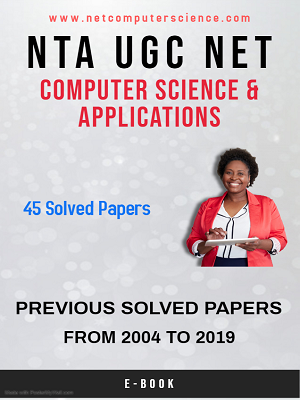1.
A ripple counter is a (n):
(A) Synchronous Counter (B) Asynchronous counter
(C) Parallel counter (D) None of the above
Answer: B
2.
8085 microprocessor has ............... bit
ALU.
(A) 32 (B)
16
(C) 8 (D)
4
Answer: C
3.
The register that stores the bits required to
mask the interrupts is ................
(A) Status register (B) Interrupt service register
(C) Interrupt mask register (D) Interrupt request register
Answer: C
4.
Which of the following in 8085 microprocessor
performs
HL = HL + HL ?
(A) DAD D (B)
DAD H
(C) DAD B (D)
DAD SP
Answer: B
5.
In ............... addressing mode, the
operands are stored in the memory. The address of the corresponding memory
location is given in a register which is specified in the instruction.
(A) Register direct (B) Register indirect
(C) Base indexed (D) Displacement
Answer: B
6.
The output of the following combinational
circuit
is :
(A) X . Y (B)
X + Y
(C) X Å Y (D)
X Å
Y
Answer: D
7.
Which of the following statements is/are True
regarding some advantages that an object-oriented DBMS (OODBMS) offers over a
relational database?
I. An OODBMS avoids the “impedance mismatch”
problem.
II. An OODBMS avoids the “phantom” problem.
III. An OODBMS provides higher performance
concurrency control than most relational databases.
IV. An OODBMS provides faster access to
individual data objects once they have been read from disk.
(A) II and III only (B) I and IV only
(C) I, II, and III only (D) I, III and IV only
Answer: B
8.
The Global conceptual Schema in a distributed
database contains information about global relations. The condition that all
the data of the global relation must be mapped into the fragments, that is, it
must not happen that a data item which belongs to a global relation does not
belong to any fragment, is called :
(A) Disjointness condition (B) Completeness condition
(C) Reconstruction condition (D) Aggregation
condition
Answer: B
9.
Suppose database table T1(P, R) currently has
tuples {(10, 5), (15, 8), (25, 6)} and table T2 (A, C) currently has {(10, 6),
(25, 3), (10, 5)}. Consider the following three relational algebra queries RA1,
RA2 and RA3:
The number of tuples in the resulting table of
RA1, RA2 and RA3 are given by:
(A) 2, 4, 2 respectively (B) 2, 3, 2 respectively
(C) 3, 3, 1 respectively (D) 3, 4, 1 respectively
Answer: D
10.
Consider the table R with attributes A, B and
C. The functional dependencies that hold on R are : A → B, C → AB. Which of the
following statements is/are True?
I. The decomposition of R into R1(C, A) and
R2(A, B) is lossless.
II. The decomposition of R into R1(A, B) and
R2(B, C) is lossy.
(A) Only I (B)
Only II
(C) Both I and II (D) Neither I nor II
Answer: C










0 Comments